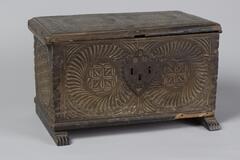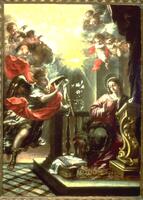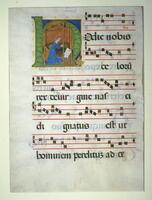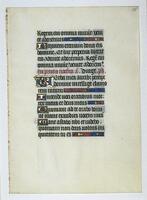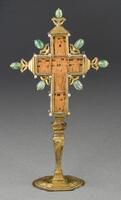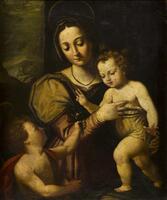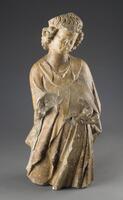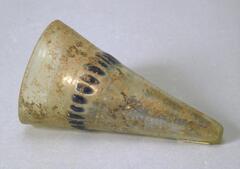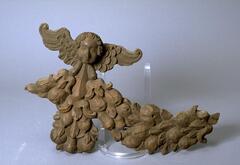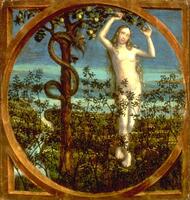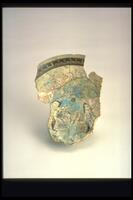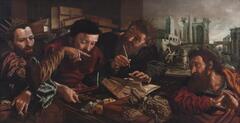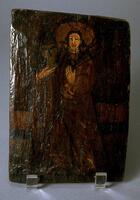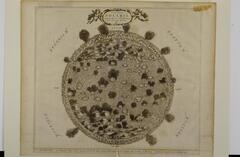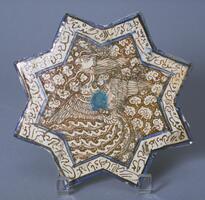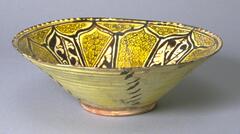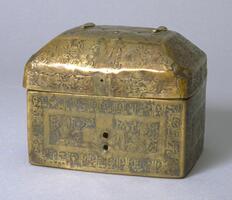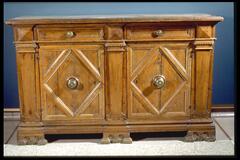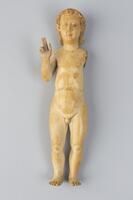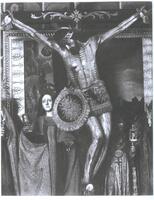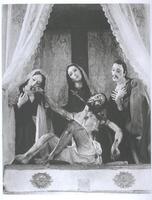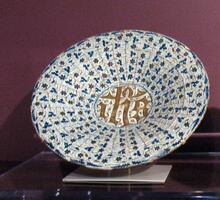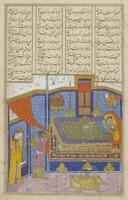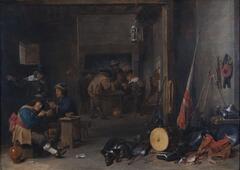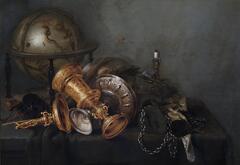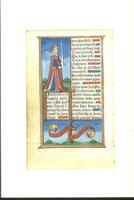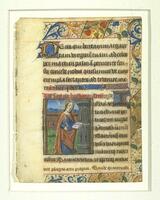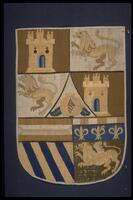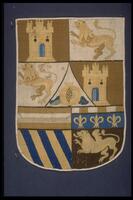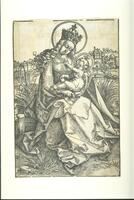Barbara Hepworth - Sphere with colour (Grey and white).
Much of Hepworth’s sculptural work is white, or sometimes black or bronze. She also made some work of hard Nigerian guaranteed wood, which was sent to her by a friend. Her work often has the theme of pregnancy or childbirth, including abstract figures with a rounded, womb-like hole. The idea of “pierced” shapes was taken up by other sculptors at the time, notably Henry Moore. Hepworth had a son by her first marriage, and subsequently triplets when married to the artist Ben Nicholson.
This sculpture, unlike Hepworth’s mainly white sculptures, is carved from striped green marble. The indents, when viewed at a distance (at least 6 ft with one eye closed is best) as you walk around, appear to be floating above the surface, like moons orbiting a planet.
1964, the year before this sculpture is officially dated, was the 4th centenary of Galileo’s birth. He is famous for his use of the new technology of the telescope in observing Jupiter’s moons, Io, Europa, Ganymede, and Callisto. Hepworth had Italian friends, who could easily have written to her with letters bearing the contemporary postage stamps commemorating Galileo. Magazine articles were published at the time about new observations of Jupiter, which would have been easily visible shining brightly in the night sky from her studio in St Ives, overlooking the Atlantic Ocean.
However, Sphere with colour (Grey and White) has only three moon-like indents, whereas Jupiter has four main moons, as discovered by Galileo. Returning to Hepworth’s more common theme of pregnancy and motherhood, the question arises again, why only three indents?
Hepworth had four children; three were triplets. Could this refer to the triplets? Or could it be telling us about her oldest son Peter, an RAF pilot who was killed in a plane crash in Thailand ten years earlier (1953)? Mourning her son, she may have felt like a planet missing its moon.
9 Items in this Learning Collection
Copyright
Annunciation
1992/1.135
Title
Annunciation
Artist(s)
Artist Unknown, Antwerp School, Belgium
Object Creation Date
circa 1520
Medium & Support
oil on panel
Dimensions
30 1/2 x 24 5/16 x 2 in. (77.47 x 61.6 x 5.08 cm);24 11/16 x 17 7/8 in. (62.6 x 45.4 cm);30 1/2 x 24 5/16 x 2 in. (77.47 x 61.6 x 5.08 cm)
Credit Line
Gift of Prof. and Mrs. Charles H. Sawyer
Label copy
March 28, 2009
Painters and sculptors outnumbered bakers and butchers in mid-sixteenth-century Antwerp. This surprising statistic reveals the importance of artistic production to the economy of a city that emerged as a mercantile capital of Europe during the 1500s. Many of the artists in Antwerp were employed in workshops, where they produced the vast majority of works for export and some for local consumption. This panel depicting the Annunciation shares many stylistic features with paintings made in Antwerp from about 1520, including the composition of the scene and the embellishment of the architecture with fashionable Italian decorative elements. Although the artist of this work remains unidentified, some of the most famous artists of the period also trained or worked in the city: Joos van Cleve, for instance, whose painting of St. John on Patmos hangs nearby, was one of Antwerp’s established masters.
Subject matter
This painted panel depicts the Annunciation in which the archangel Gabriel announces to the Virgin Mary that she has been chosen to give birth to the son of God. The Virgin turns from her reading and humbly accepts the divine decree as the Holy Spirit, a white dove encircled by light, descends to impregnate her. The flowering white lily placed on the floor nearby symbolizes her virtue and purity.
Physical Description
An angel, holding a scepter in his left hand and making a gesture of speech with his right, interrupts the Virgin at her reading. She kneels on the floor and rests her left hand on an open book placed atop a lectern. A vase with a flowering lily sits on the floor between the angel and the Virgin and a small white dove encircled by a halo hovers between them. The scene unfolds within an elaborate and richly decorated interior that includes a chair and canopied bed in the background.
Primary Object Classification
Painting
Primary Object Type
altarpiece
Additional Object Classification(s)
Painting
Collection Area
Western
Rights
If you are interested in using an image for a publication, please visit http://umma.umich.edu/request-image for more information and to fill out the online Image Rights and Reproductions Request Form.
Keywords
Christianity
altarpieces
angels (spirits)
doves (Columbidae)
panel painting (image-making)
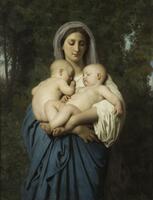

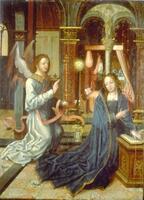


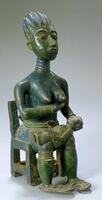
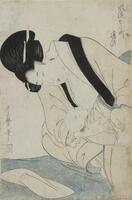
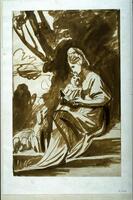
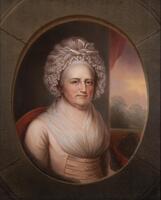
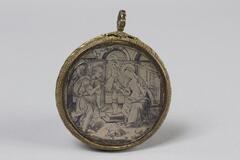
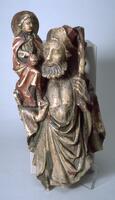
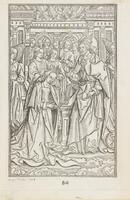
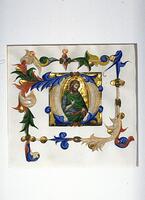
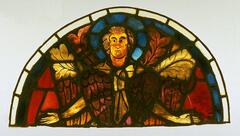

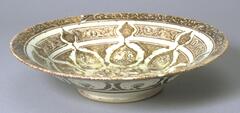
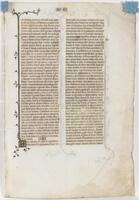
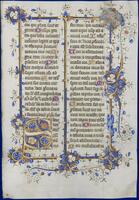

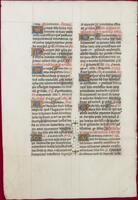
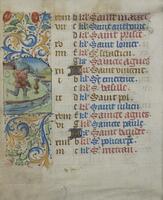
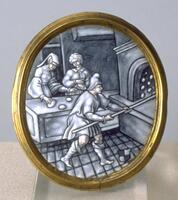
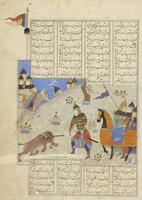
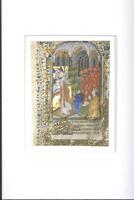


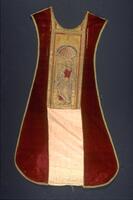

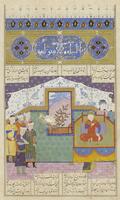

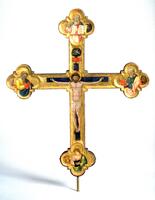
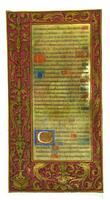
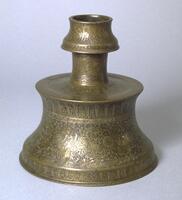
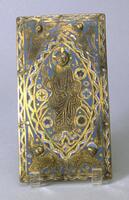
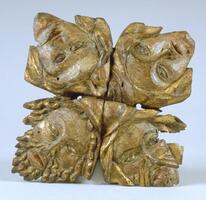
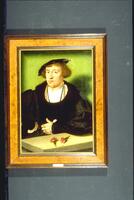
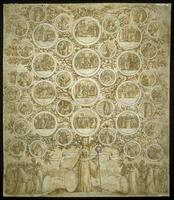
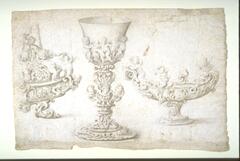
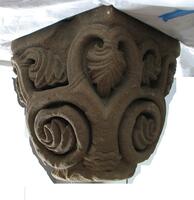
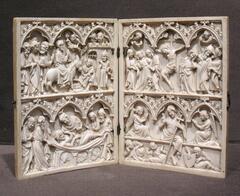
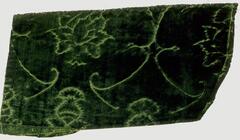
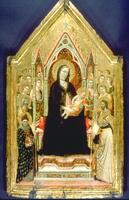
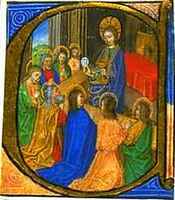



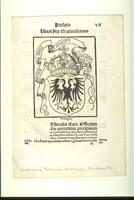

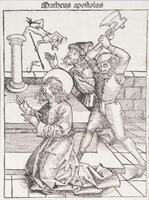
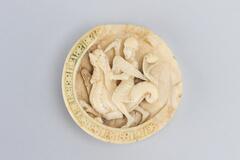


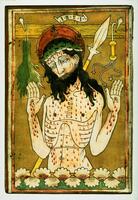

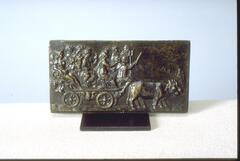
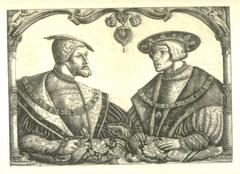
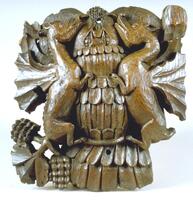
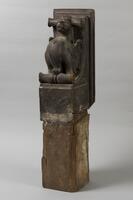
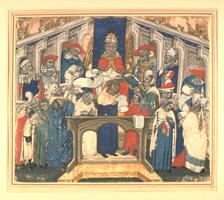
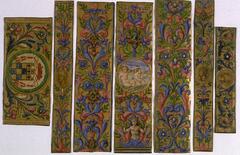
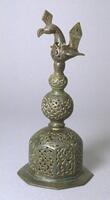
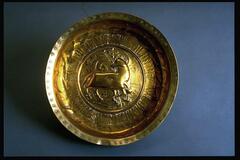

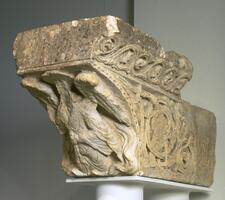
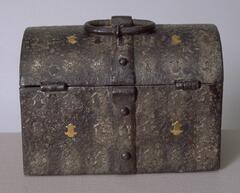
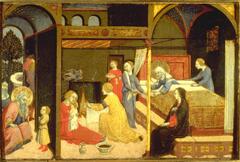

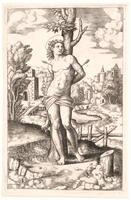
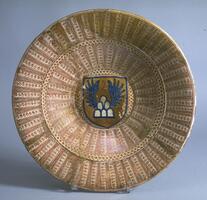
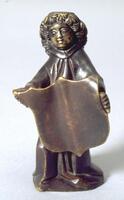


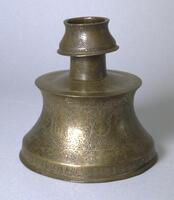
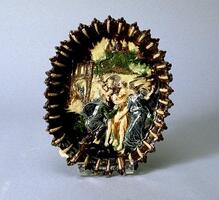
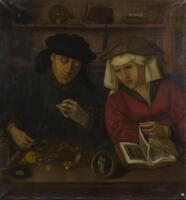
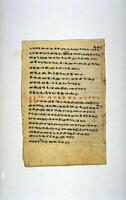

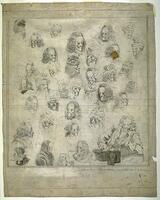
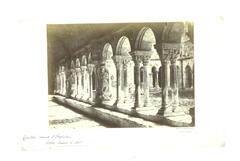
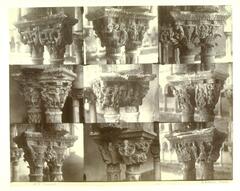

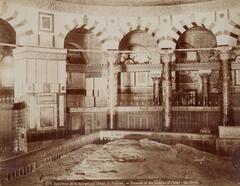
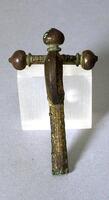
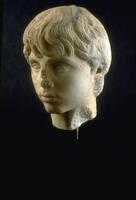

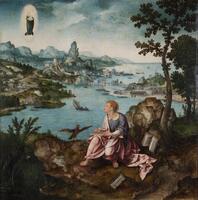

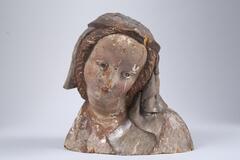
![This rectangular panel depicts four sacred figures rendered in dark hues with passages of vibrant red against a gold background. The upper edge of the gilded frame bears the prayer known as the "Hail Mary" ("Ave Maria Gratia Plena Domin[us tecum]"). This rectangular panel depicts four sacred figures rendered in dark hues with passages of vibrant red against a gold background. The upper edge of the gilded frame bears the prayer known as the "Hail Mary" ("Ave Maria Gratia Plena Domin[us tecum]").](/media/W1siZiIsIjIwMjIvMDUvMjUvMzZ5bWpwaTBuNl9kZWZhdWx0LmpwZyJdLFsicCIsInRodW1iIiwiMjQweDIwMCJdXQ?sha=182c62b7143d052b)

